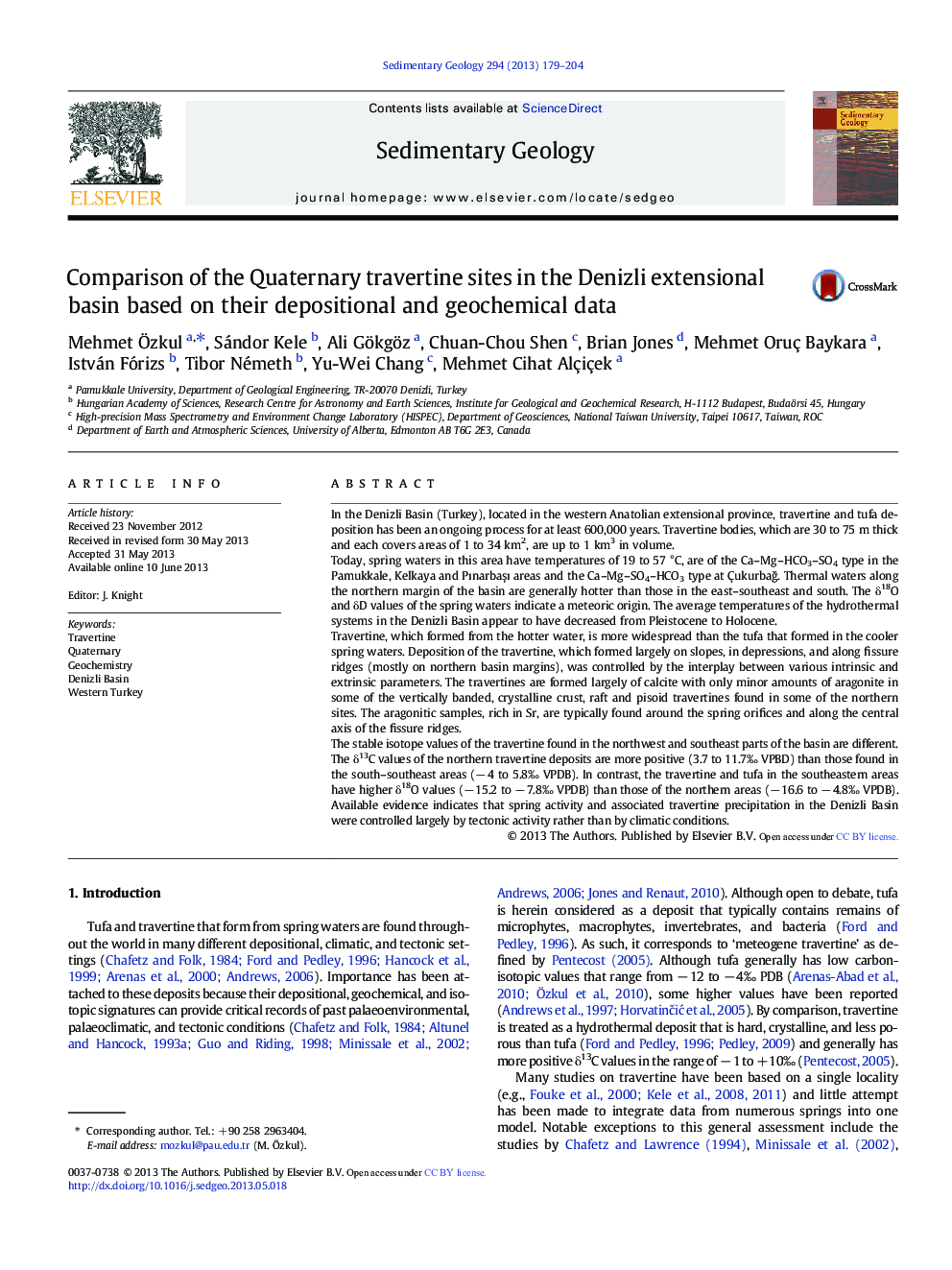| کد مقاله | کد نشریه | سال انتشار | مقاله انگلیسی | نسخه تمام متن |
|---|---|---|---|---|
| 6433210 | 1636069 | 2013 | 26 صفحه PDF | دانلود رایگان |
In the Denizli Basin (Turkey), located in the western Anatolian extensional province, travertine and tufa deposition has been an ongoing process for at least 600,000 years. Travertine bodies, which are 30 to 75 m thick and each covers areas of 1 to 34 km2, are up to 1 km3 in volume.Today, spring waters in this area have temperatures of 19 to 57 °C, are of the Ca-Mg-HCO3-SO4 type in the Pamukkale, Kelkaya and PınarbaÅı areas and the Ca-Mg-SO4-HCO3 type at ÃukurbaÄ. Thermal waters along the northern margin of the basin are generally hotter than those in the east-southeast and south. The δ18O and δD values of the spring waters indicate a meteoric origin. The average temperatures of the hydrothermal systems in the Denizli Basin appear to have decreased from Pleistocene to Holocene.Travertine, which formed from the hotter water, is more widespread than the tufa that formed in the cooler spring waters. Deposition of the travertine, which formed largely on slopes, in depressions, and along fissure ridges (mostly on northern basin margins), was controlled by the interplay between various intrinsic and extrinsic parameters. The travertines are formed largely of calcite with only minor amounts of aragonite in some of the vertically banded, crystalline crust, raft and pisoid travertines found in some of the northern sites. The aragonitic samples, rich in Sr, are typically found around the spring orifices and along the central axis of the fissure ridges.The stable isotope values of the travertine found in the northwest and southeast parts of the basin are different. The δ13C values of the northern travertine deposits are more positive (3.7 to 11.7â° VPBD) than those found in the south-southeast areas (â 4 to 5.8â° VPDB). In contrast, the travertine and tufa in the southeastern areas have higher δ18O values (â 15.2 to â 7.8â° VPDB) than those of the northern areas (â 16.6 to â 4.8â° VPDB). Available evidence indicates that spring activity and associated travertine precipitation in the Denizli Basin were controlled largely by tectonic activity rather than by climatic conditions.
Journal: Sedimentary Geology - Volume 294, 15 August 2013, Pages 179-204
